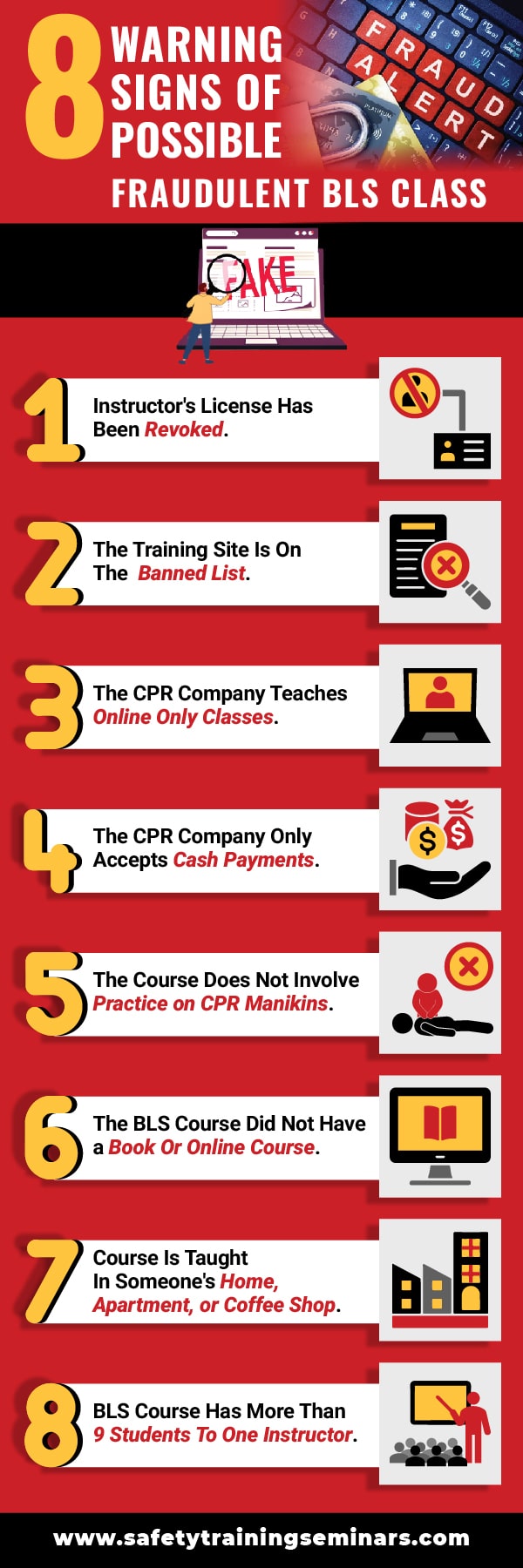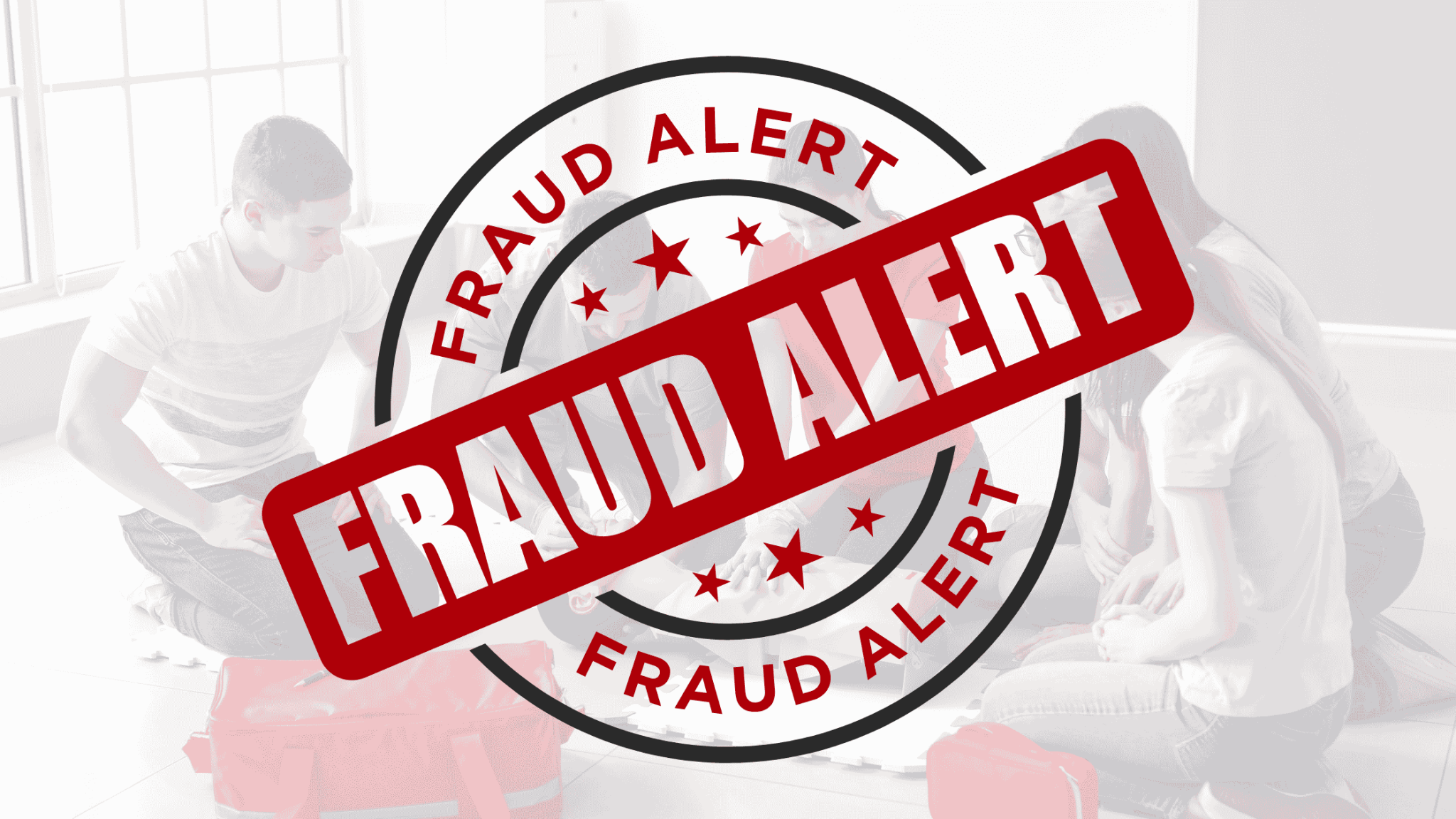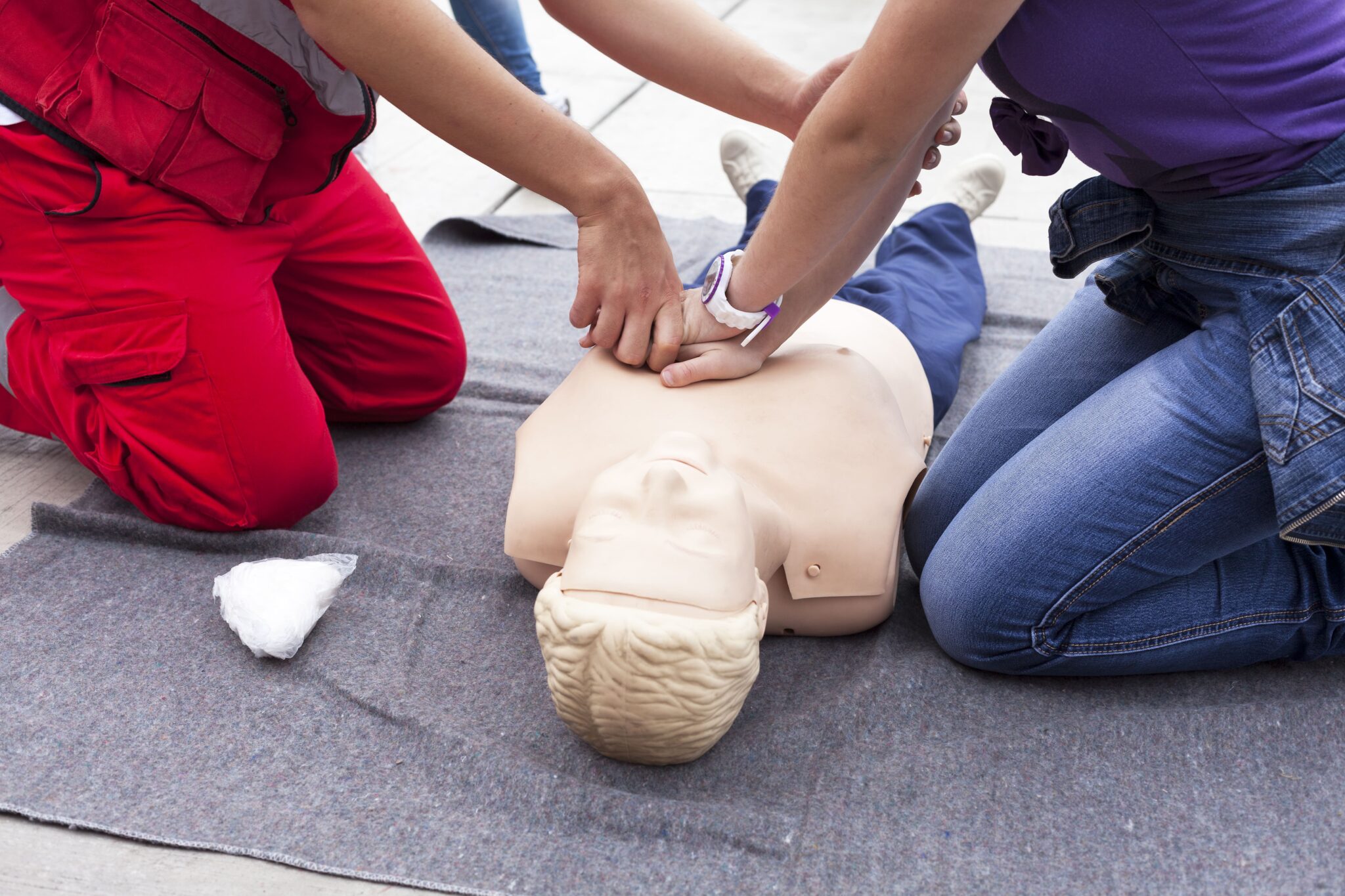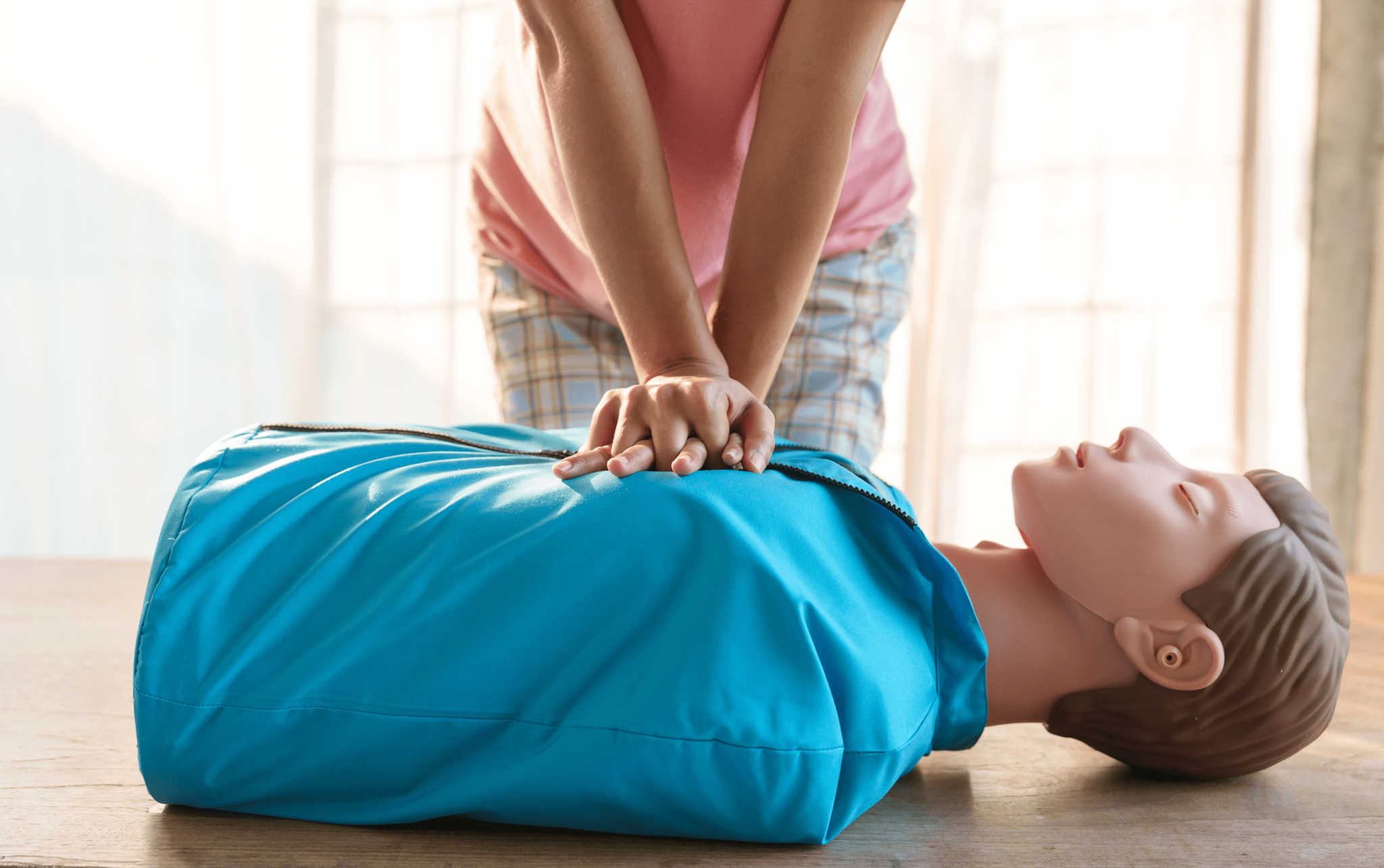Not all CPR classes are created equal. If you’re planning to take an American Heart Association (AHA) Basic Life Support (BLS) course, be cautious—some companies falsely advertise AHA credentials while cutting corners or ignoring compliance. Here’s how to spot red flags:
1. The Instructor Has Been Revoked by the AHA
If an instructor has had their AHA status revoked, they are no longer authorized to teach AHA courses. Always ask to see a current instructor card or verify their status through the Training Center they claim to represent.
2. The Training Site Has Been Banned
Some companies continue to operate after being removed from the AHA network. Make sure the training site is currently aligned with a legitimate AHA Training Center. You can verify this by contacting the Training Center directly or filling out this CPR Fraud Alert Checker.
3. It’s an Online-Only CPR Company
The AHA does not allow 100% online BLS certification. Courses must include a hands-on skills session. If a company offers certification without in-person practice, it’s not AHA-compliant.
4. The Company Only Accepts Cash
Legitimate CPR companies typically accept multiple forms of payment and provide receipts. If a business demands cash-only payments, it could be trying to avoid accountability or financial traceability.
5. No Manikin Practice Is Included
Hands-on practice with manikins is a core component of any AHA BLS course. If the class doesn’t include this, it’s not a valid AHA course, no matter what they claim.
6. No Book or Online Course Is Provided
The AHA requires students to have access to the appropriate course materials. If the company doesn’t include the mandatory eLearning module or textbook, it’s a serious compliance issue.
7. Class Sizes Exceed 9 Students per Instructor
AHA guidelines require a ratio of no more than 9 students per instructor to ensure effective learning and supervision. Larger class sizes compromise training quality and violate AHA standards.
8. Classes Held in a Home, Garage, or Coffee Shop
While some instructors operate independently, professional CPR classes should be held in safe, clean, and appropriate facilities. Home-based or informal venues often signal a lack of oversight or professionalism.
Final Tip: Before signing up, verify the company’s affiliation with an official AHA Training Center and confirm that your certification will be issued directly through the AHA. Always choose quality and credibility over convenience.









